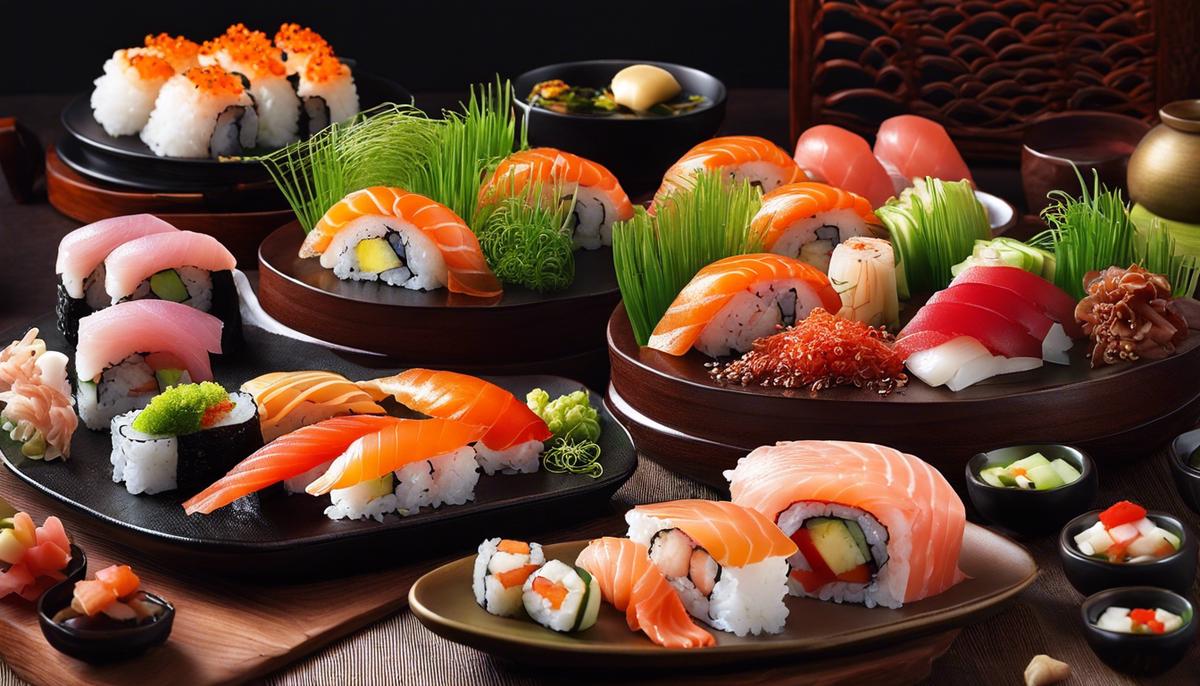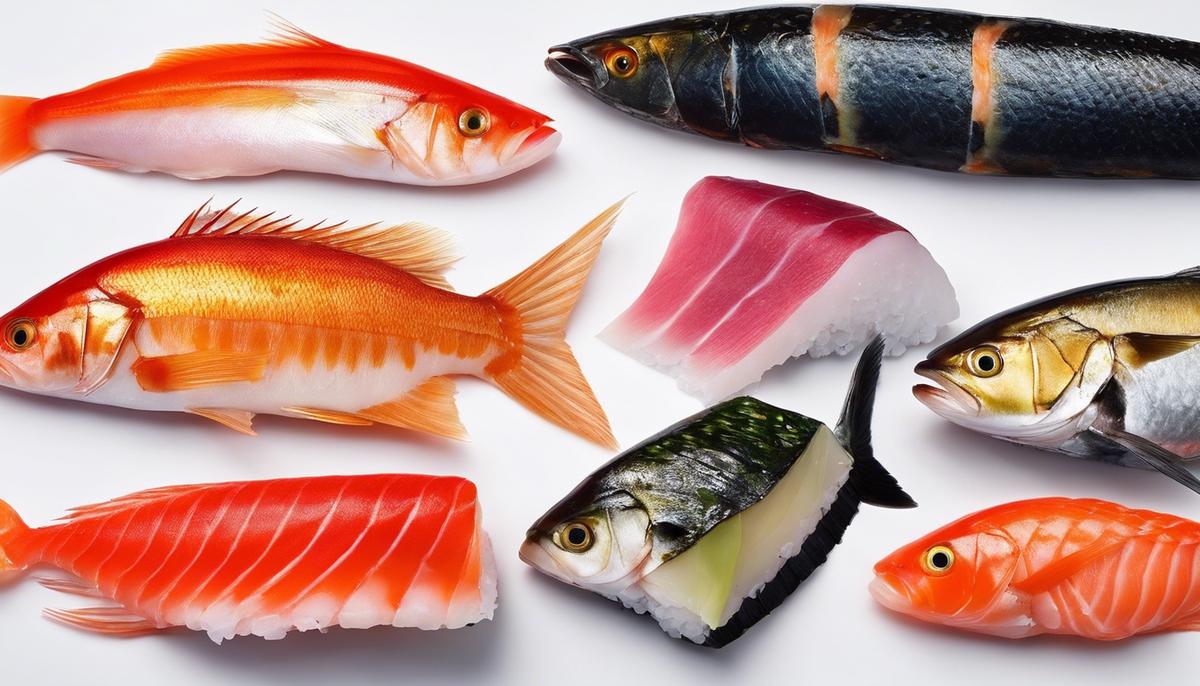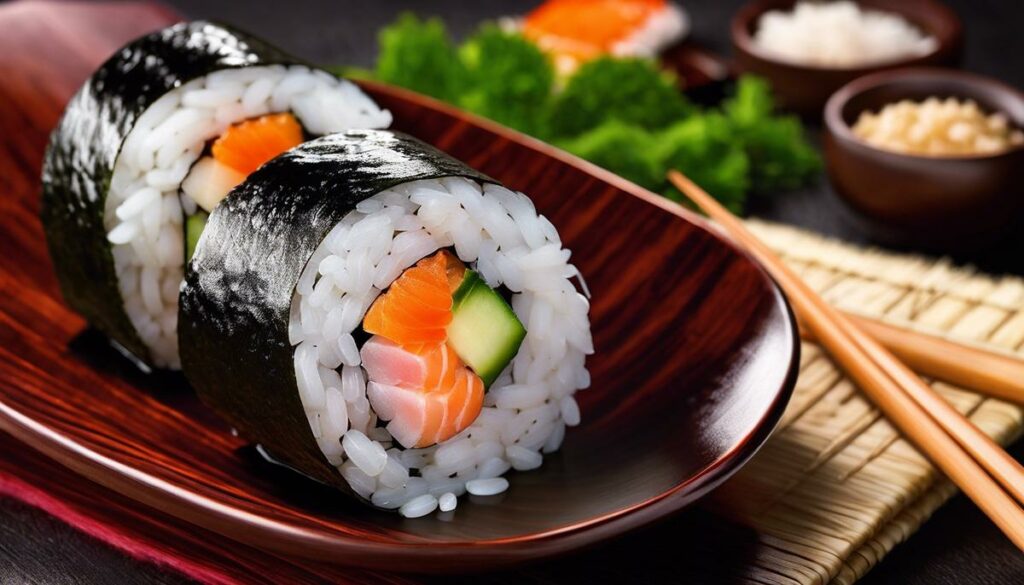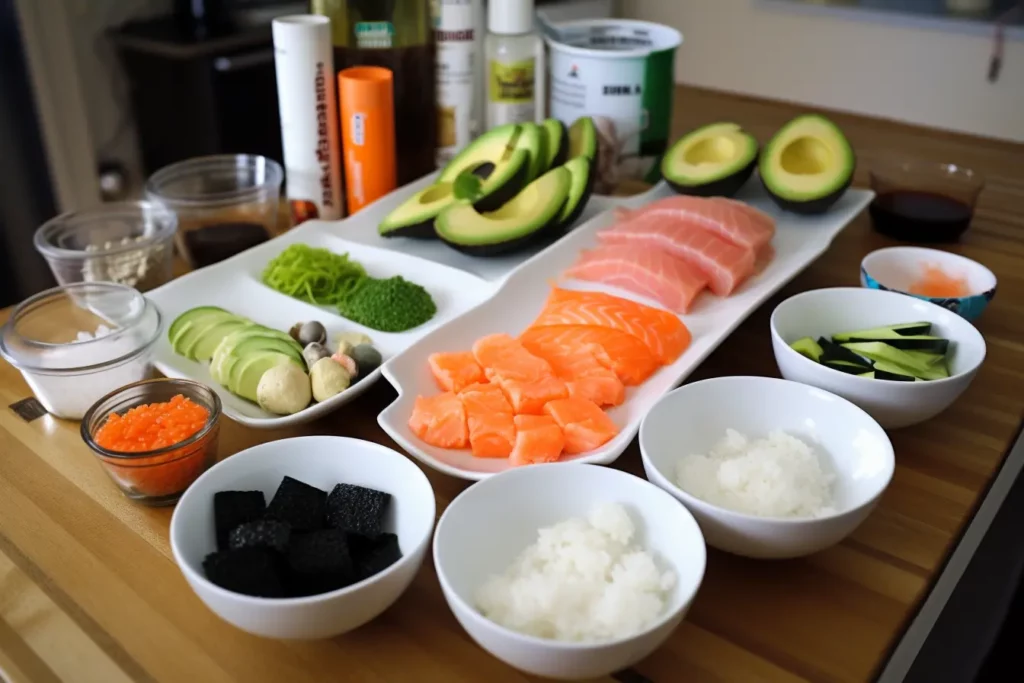The art of sushi making is one that requires skills in craft and palate alike. A perfectly rolled sushi roll with a fresh, crunchy filling and beautiful appearance can only be achieved if the basic ingredients are optimally chosen and prepared. At the heart of Japanese cuisine, sushi is a dish based on simple, natural ingredients whose quality and freshness make all the difference. In this essay, we will take an in-depth look at the ten must-have ingredients for homemade sushi, including sushi rice, nori sheets, and fresh fish.
Sushi Rice
There are few things that capture Japan’s cultural heritage and artistry better than sushi. The fine presentation, the bright colors and, of course, the taste – all these elements captivate people worldwide. And yet, many shy away from making sushi themselves, often because of its all-important component – sushi rice. But what really makes sushi rice so unique?
First of all, sushi rice is no ordinary rice. It is a special short-grain rice known for its unique starchy profile. This starch is what gives cooked rice its sticky consistency, which is so important for making sushi.
Secondly, it is the method of preparation that distinguishes sushi rice from other rice. Once cooked, it is mixed with a mixture of rice vinegar, sugar and salt to create a slightly sweet and sour flavor that harmonizes perfectly with the fresh lightness of the fish.
Thirdly, the way the rice is treated is crucial to the quality of the sushi. It requires careful handling and a special technique to shape it without destroying its texture. This is one of the most important skills that a sushi chef must master.
Fourthly, the sushi rice contributes to the aesthetic presentation of the sushi. Its pearly white color and uniform shape make for a visual experience that is as important as the taste itself.
Overall, it can be said that the sushi rice is a significant part of what makes sushi so unique and fascinating. From its variety and preparation, to its handling, to its role in the aesthetics of the dish, sushi rice is a component whose importance should not be underestimated if you want to achieve the authentic taste and style of sushi.

Nori (seaweed leaves)
Now let’s think about what adds the visual flair and unmistakable flavor connection to our beloved sushi rolls: nori sheets. These black, crispy pieces of paper are more than just a wrapper for sushi rice and toppings, they’re an essential part of what makes sushi sushi. But what makes nori sheets so indispensable for making sushi?
First, their function. Nori sheets are the glue that holds the sushi roll together. They seal the rice and toppings in a compact, edible shell that can be easily picked up with your fingers or chopsticks. Sushi wouldn’t be conceivable without nori leavers, as long as they allow you to enjoy the delicious flavors of sushi without all the stuff falling apart.
Second, the taste. Nori leaves bring an unmistakable sea aroma into play, which provides a nice contrast to the sweet and sour taste of the sushi rice. This flavor pairs perfectly with a variety of sushi toppings, be it classic ones like raw tuna and salmon, or more unusual ones like sweet potato and smoked tofu.
Third, the texture. Nori sheets add a crunchy texture to the sushi rolls, counteracting the otherwise soft texture of the rice. Due to their thin and crunchy structure, they offer a pleasant texture contrast when biting, which makes the eating experience even more enjoyable.
Fourth, nutrients. Nori leaves are not only aromatic and functional, they are also rich in vitamins and minerals such as calcium, iron and iodine. Their consumption contributes to a balanced diet and promotes health.
Finally, the aesthetics. Nori sheets give sushi its signature look. The dark green to almost black color of the leaves contrasts nicely with the light and colorful ingredients inside the sushi roll. This adds to the sensual pleasure of seeing and consuming sushi.
To sum up, nori sheets are essential for making sushi. They offer not only a functional role, but also a taste, texture, nutritional and aesthetic role that makes sushi what it is: a unique and wonderful food that pleases both the eye and the palate.

Fresh fish
– Fresh fish as a non-negotiable ingredient for authentic sushi.
Although sushi rice plays a crucial role in sushi preparation, the fresh fish remains the ultimate centerpiece. Without fresh fish, it would be almost impossible to achieve the distinctive and sought-after taste of sushi.
– The quality and freshness of the fish directly influence the sushi eater’s sensory experiences.
A fresh fish is rich in natural flavors and has a pleasantly firm but delicate texture that melts in the mouth. No wonder sushi chefs all over Japan swear by it!
– The safety of consuming raw fish.
When choosing fish for sushi, it’s not just the taste that’s important. Health concerns are also key, as raw fish carries the risk of food poisoning. Fresh fish, on the other hand, significantly reduces this risk.
– The color of the fish adds to the aesthetic appeal of sushi.
A freshly caught fish has a bright, rich color that speaks on the sushi platter. In contrast, old fish can look bland and less appealing. It is therefore extremely important that the fish is fresh in order to achieve this visual experience.
– The contribution of fresh fish to a healthy diet.
Fresh fish is an excellent source of high-quality protein and omega-3 fatty acids, which are essential for good health. When preparing sushi, the fish is served raw, which helps to better preserve these nutrients.
– The choice of fresh fish determines the “profile” of the sushi dish.
From tuna to salmon, shrimp to sea urchin, each species delivers its unique flavors and textures that subtly change the end result. Again, the freshness of the fish is crucial to the quality of the sushi.
Sushi – an art form that is more than just simple cooking.
It’s all about aesthetics, taste and texture. It’s a culinary experience that’s celebrated in every bite. And in addition to rice and nori leaves, fresh fish is the living heart of this wonderful creation. Cheers to fresh fish in sushi – for taste, health and aesthetics. Enjoy your meal!

In the end, sushi isn’t just about fish and rice. It’s about a culinary journey that engages the senses with taste, texture and visuals. If you want to learn the art of sushi making, it’s best to start with the basic ingredients. Sushi rice, nori sheets, and fresh fish are just a few of them. By engaging with these elements, both in their uniqueness and in their interplay, one can begin to recognize and appreciate the complexity and potential that sushi can offer as a dish. With careful selection and preparation of these essential ingredients, you can make sushi rolls that bring the best of Japanese culinary tradition to your home.


